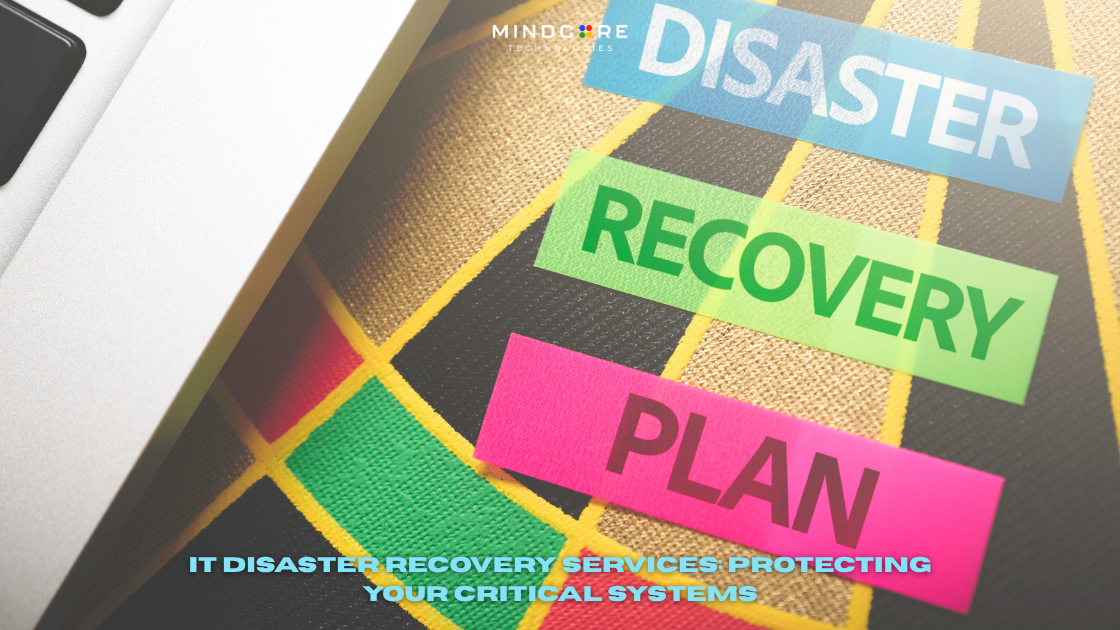Imagine this: your servers crash in the middle of the workday, and customer transactions stop cold. Emails stop syncing, files become inaccessible, and your entire team is left stuck. In this moment, your ability to bounce back depends on one thing: your IT disaster recovery plan.
This post explains what IT disaster recovery services are, how they protect your systems, and why they’re different from general disaster recovery solutions. Whether you’re running a local business or a company with cloud infrastructure, the way you protect your digital systems matters more than ever.
What Makes IT Disaster Recovery Different?
IT disaster recovery focuses on digital infrastructure, not physical cleanup. While general disaster recovery services might include property repairs and insurance documentation, IT recovery is about keeping your digital operations alive.
This means:
- Restoring servers, apps, and databases
- Rebuilding virtual environments
- Resuming operations in minutes or hours instead of days
If your business depends on digital tools to serve clients, manage inventory, or run transactions, IT disaster recovery is essential. Compared to broader disaster recovery service providers, IT-specific plans go deeper into the systems that power your business daily.
Core Components of an IT Disaster Recovery Plan
System Backups and Infrastructure Recovery
At the heart of any recovery plan is the ability to bring back systems that were damaged, deleted, or lost. This includes cloud environments, physical servers, and virtual machines. Many companies combine local and remote backups to stay protected. This is where data backup and disaster recovery services work together. They allow you to not only save your files but also restore entire environments.
App and Database Restoration
Your customer portal might be down, or your internal CRM might be unreachable. That’s where database-level recovery and app-specific backups matter. Tools that allow for quick app and database restore points are critical. Businesses that use backup disaster recovery services often add these tools to protect critical software.
Network and Configuration Failover
Recovery doesn’t stop at servers. You also need to bring back VPNs, firewalls, and DNS settings. Recovery plans that include configuration backup help restore the exact way your network was structured. Many businesses rely on cloud disaster recovery services to rebuild complex network environments quickly.
RTO/RPO Targeting and Testing
A solid recovery plan sets clear goals.
- RTO (Recovery Time Objective) defines how fast your systems should be restored.
- RPO (Recovery Point Objective) sets the limit on how much data you can afford to lose.
If your RTO is four hours but your current provider takes eight, that’s a red flag. This is why regular disaster recovery testing is so important. It proves your recovery setup actually works before a crisis hits.
The Role of Automation in IT Disaster Recovery
Manual recovery is slow and prone to mistakes. That’s why more companies are moving toward automation. With the right setup, you can automate recovery steps, test them regularly, and get systems running with little human input.
Services like AWS Elastic Disaster Recovery let you spin up new systems automatically when your main environment fails. Some businesses also use orchestration tools like VMware Site Recovery or Azure Site Recovery for added control.
Automated systems provide audit logs and full transparency, which are essential for businesses under compliance regulations. It’s not just a time-saver. It’s a critical layer of reliability when your team is under pressure.
Use Cases: When You Absolutely Need IT Recovery
Some businesses can’t afford even a short outage. Here are common examples:
- SaaS providers need to meet uptime guarantees
- Healthcare clinics must keep electronic records available
- Ecommerce shops lose money every second their store is offline
- Financial firms must protect transactional data in real-time
The importance of a disaster recovery plan for businesses becomes obvious the moment these systems go dark. Having a recovery strategy means you’re not left guessing what to do.
Documentation and Compliance: More Than Just Recovery
For many industries, having an IT recovery plan isn’t just smart—it’s required. Compliance frameworks like HIPAA, PCI-DSS, and ISO demand clear documentation of how businesses will restore systems during an outage.
That’s why leading disaster recovery service providers include:
- Step-by-step recovery documentation
- Audit logs and automated reporting
- Proof of regular testing
These records help your business stay compliant, avoid penalties, and pass audits without last-minute panic.
Choosing the Right IT Disaster Recovery Provider
Look for providers who:
- Have experience with cloud, virtual, and on-prem systems
- Offer flexible recovery times and custom strategies
- Include automation tools for faster recovery
- Provide documentation and support for compliance reviews
For example:
- AWS disaster recovery services are great for teams already using cloud tools.
- ATI disaster recovery services work well for businesses that want deep IT support.
- Broader disaster recovery service providers are ideal if you need a hybrid approach that includes both on-site and cloud elements.
Your provider should help you set recovery goals, build a plan, and test it on schedule.
Common Mistakes in IT Recovery Planning
Even good businesses make these mistakes:
- Relying only on data backups
- Skipping regular testing
- Forgetting to document who handles each recovery task
- Not backing up configurations or network settings
Recovery planning isn’t just about tools. It’s about building a clear, step-by-step path that your team can follow when every second counts.
Understanding the Costs of IT Disaster Recovery
Pricing can vary depending on your setup and risk profile. Common pricing models include:
- Pay-as-you-go for smaller cloud-based services
- Flat-rate contracts for managed recovery support
- Per-device or per-VM pricing for enterprise environments
Costs are influenced by:
- Your RTO and RPO requirements
- Size of your infrastructure
- Compliance and reporting needs
Compared to the cost of downtime—lost revenue, lost customers, and regulatory fines—recovery services are often a smart investment.
Final Thoughts: IT Resilience Comes from Preparedness
Your servers, software, and cloud systems are the core of your business. When something breaks, how fast you recover is what defines the impact.
IT disaster recovery services give you that fast path back. With a tested plan, automation tools, and the right partner, you don’t have to panic when problems happen. You’ll already know what to do, who’s responsible, and how to bring everything back.
Prepared businesses don’t wait for downtime to expose their gaps. They plan for it. And they recover faster because of it.


